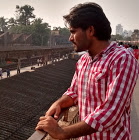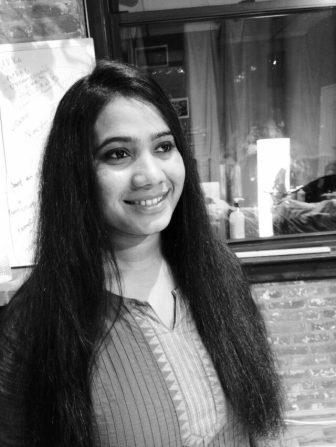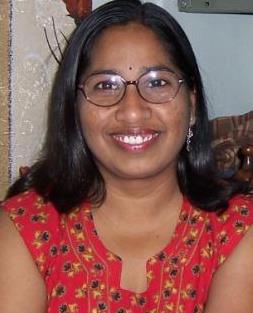Pruthviraj Rama Gorakh
 From the last two years, the topics of nation and nationalism are being hotly debated in the country. In the last parliamentary elections, the BJP’s campaign put forth their idea of nation, based on Hindu nationalism. As they complete two years in office, we are now able to analyze their idea of nation and nationalism. Who constitutes their nation? Who has been excluded? What thoughts and principles is their nationalism based on?
From the last two years, the topics of nation and nationalism are being hotly debated in the country. In the last parliamentary elections, the BJP’s campaign put forth their idea of nation, based on Hindu nationalism. As they complete two years in office, we are now able to analyze their idea of nation and nationalism. Who constitutes their nation? Who has been excluded? What thoughts and principles is their nationalism based on?
Since 2014, the elected state machinery and its allied groups have been promoting campaigns such as Ghar Wapsi, war against ‘Love Jihad’ etc. On the surface, these seem to target the minorities of the country. While it is true that minorities of the country are victims of Hindu jingoism, that has not been the only reality. We have to ask the larger questions about why they are being targeted and about the politics and hidden agendas behind this.
Any nationalism requires an enemy in order to grow. Hindu nationalism has considered Muslims and other minorities as its enemy so that it could unify the Hindu masses, while keeping the differences and hierarchy intact within the fold. When I say keeping the differences and hierarchy intact, I am referring to the monster of caste, which is in the interest of those who are beating the drums of Hindu nationalism. Hindu nationalism is a new form of brahmanical hegemony. They have just changed their name for the 20th century and put forth the illusive ideas of V.D. Savarkar and Golwalkar1.
The binary of Hindu-Muslim has been created by the so-called Hindu nationalists, and is based on pseudo history. Around the world, wherever a fascist nation has risen, they have created pseudo history to justify its existence. In the Indian context, Hindu nationalism has done the same thing. They have put forth pseudo history and the pseudo binary of Hindu-Muslim,with which they could divert the attention of the masses from real structural problems, and operationalize caste-feudalistic-patriarchal2 structures by burying the voices of the oppressed under the beautiful and decorative carpet of Hindu nation.
Those who challenge this caste-feudalistic-patriarchal set upare being branded as anti-national, and their existence within the country is being delegitimized.
1) Rohith Vemula, a Ph.D. scholar from Hyderabad Central University and activist of Ambedkar Students Association, was raising his voice against brutal caste discrimination within the university campuses across India and stood against the brahmanical politics of ABVP in the campuses. He was branded as anti-national3 and forced by the political nexus to commit suicide.
2) Prior to this,the Central Ministry (MHRD) banned Ambedkar Periyar Study Circle in IIT Madras by claiming that students were engaging in antinational activities, criticizing BJP’s policies and speaking against Hindu religion.
3) Recently in Maharashtra, the censor board pressurized a playwright to drop words such as Jay Bhim, Ramabai Nagar and Khairlanji from the play ‘Jai Bhim – Jai Bharat’, after they found the entire script to be anti-national (the phrase Jai Bhim is used by those fighting against caste exploitation, as a salutation to their comrades). Ramabai Nagar is a colony in Mumbai where most residents are Dalit and 10 of whom were killed when police fired on protestors demonstrating against the desecration of an Ambedkar statue. Khairlanji is the village in which an entire Dalit family was massacred and raped by an upper caste mob.
4) In Tata Institute of Social Sciences, Mumbai, RSS activists entered the campus with a mob of 50 people on the occasion of Rajiv Malhotra’s4 talk held on 29 January 2016. They passed casteist comments and labeled Ambedkarite students in the campus as anti-nationals, terrorists and Jihadis, when students tried to question the arguments of the speaker.
From the above instances, we can see that talking about annihilation of caste and putting forth constitutional principles and values has become a criminal activity against the nation, and the Hindu nationalistsdo not want these issues to reach a larger political ground. We can observe this in the currentsocio-political set up around us. While it is very easy to question our present, we need to get to its roots in the past.
India attained independence from British rule in 1947. From that point onward, we claim that India as a nation came into being. There are complexities and confusions with regard to terms such as nation, state, and nation-state since they overlap and are so interdependent. There have been arguments from subaltern studies that say that ‘India fails to emerge as nation.’5 G. Aloysius has also put forth another argument saying that,”Due to the Independence Movement, we have evolved a kind of nationalism. India as a state entity has come into being but a nation as such has not evolved”. When somebody like Prof.Aloysius says this, we have to see what exactly he is pointing to. How does he analyze the history of Indian Independence? Now does he look at a Nation and what is his idea of a Nation?
Diverting a little from the topic, let me mention here that since the past few days, I have also been posing these questions to the students at our institute. Many of them were confused and could not explain what nation and nationalism meant. When I would ask myself these questions, I too would go blank for a while, since I knew the theoretical answer I learned from political science, but could not sense it practically. This might be the reason for Rohith Vemula’s deep sense of alienation with his country and might be the same with the students who could not define nation when I questioned. This is why, 65 years after independence, eminent scholars from JNU are having to give a series of lectures to explain what nation actually means6. This itself reveals that we are not a nation. We only assume to be a nation.
Now coming back to Aloysius, we can try to understand why we are not nation, by summarizing his arguments in his book Nationalism Without A Nation In India:
1) A Nation is a qualitatively new social formation within the State; it is not merely a separation based on the borders drawn by the British. This new social formation is based on modern principles, which are essentially liberty, equality and fraternity.
2) The formation of India was at the behest of brahmanical interest, and was not a new invention.
3) Nationalism helps us bring transformation, from old feudalistic systems to a new modern entity. However, it is essential to question how nationalism allows only those who held power in the old caste-feudalistic system, to hold power in the new modern system. It does not allow sharing of power among all sections of society. This is the reason why nationalism does not create a nation for all. In fact, a nation does not come into being at all.
4) Pre-modern elite communities have interpreted and analyzedtraditions to hold on to their power in the colonial as well as modern periods. The idea of India can always be traced from here. Fabian socialist Nehru, in his book Discovery of India traces the notion of nation back to the so-called Aryan civilization. Through this, Nehru considers Vaidik tradition as national and all other Non-Aryan, Buddhist and Islamic traditions as inferior and excludes them from being national. This clearly shows a purpose of sustaining brahmanical hegemony. Gandhi had done the same thing by popularizing ‘Ram Rajya’, publicly supporting Varnashram system, and by assimilating Hindu religion into politics.
5) After independence, the upper caste nationalist movements retained the political power of the state in their hands. Rather than bringing all communities together to a common minimum ground, these nationalistic movements excluded them to serve the interests of their own caste, class and community. This is why Ambedkar said that the national movement had only strengthened the interests of traditional beneficiaries.
6) Although social scientists look at nation and nationalism as complementary, it is not guaranteed that a nation can be derived from nationalism. If societal transformation does not occur with a nationalism, then the relation between nation and nationalism becomes ambiguous. Ernest Gellner says that nation is derived out of nationalism – but industrialization and its acceptance are the pre-conditions for that to happen. Benedict Anderson also puts forth a condition of ‘print capitalism’ for the existence of an ‘imagined community’. In India, this imagined notion of nation has remained limited to the elite castes. This is why nationalism has succeeded in their terms, but a nation as such does not exist. In the Indian context, brahmanical societal set up has remained an obstacle for the creation of a nation. Periyar Ramasamy dismissed the independence of India and Annabhau Sathe criticized the idea of Independence, due to these very reasons.
7) There are two kinds of reality in today’s India – ordinary reality for ordinary beings and higher reality for higher beings. India’s reality has been constructed in such a hierarchal and unequal manner that ‘higher’ realities such as CBSE schools, IITs, etc., are considered India’s reality and ‘ordinary’ realities like other government schools, colleges and universities are not considered as India’s reality. This two-tier reality on which our polity is based, is the reality of savarna and avarna.
8) Egalitarian homogenization is possible through a universal education system, by which we can initiate nation building.
Aloysius’ Nationalism Without A Nation marks the dialectic between those in favour of caste and those against caste. Without resolving this dialectic, we cannot step ahead to form a nation. While Prof. Aloysius contributed majorly to academics, there have been many before him who first underlined this struggle. Jotiba Phule, Periyar and Ambedkar had clearly articulated about this dialectic.
Jotiba Phule established the ‘Truth Seeker Society’ (Satyashodhak Samaj) in 1871, which aimed at transformation by waging a struggle against caste hierarchy. Phule used to consider the Congress Party as a party of Bhatji and Shetji (Brahmins and money lenders). When Congress was established in 1885, Phule clearly stated that “A nation will not come into being unless women, shudras, ati-shudras, Bhillas (tribals) and Koli (fishermen) come together and educate themselves. Unless they start thinking, it is impossible to bring the feeling of unity and oneness among us. If this Congress has formed to preserve the interests of Brahmins and landlords, then who will ask them?”
Periyar envisaged the conception of nation by saying, “No god, no religion, no Gandhi, no Congress and no brahmins”. Annapurna, one of the activists who worked with Periyar said, “Our country is a colony of Britishers, lower castes are the colony of Brahmins but more importantly, women are the colony of men. So we don’t want independence only from Britishers but we want independence from Brahmins as well as men”. After India’s independence, Periyar commented “How can the rule of Brahmins be the rule of Parayas (untouchables)? Rule of cat will be rule of rat? Rule of landlords will be rule of farmer? Rule of owner will be rule of worker? Truly we are not a nation but a gallery of many castes, religions, and gods.”
In his published speech, Annihilation of Caste, Ambedkar propounded that every caste in India is a nation. According to him “Nationality is a subjective psychological feeling. It is a feeling of a corporate sentiment of oneness which makes those who are charged with it feel that they are kith and kin. “Since each caste shows this characteristic of nationality, every caste in the country is a nation. Consequently, every caste is anti-national. Unless we annihilate the caste structure of society, we cannot stand as a nation in this world.
“Nation for Dr.Ambedkar was a new form of social and societal relationship built on the principles of equality, liberty and fraternity. Nationalism was the call given to abolish the brahmanic ideology of privilege and discrimination, embodied in tradition and religion as reinvented by the cultural nationalist.”7 His mass conversion to Buddhism and leading role in framing our constitution can be seen as genuine efforts in the direction of creating a nationalistic society in India.
After examining at the arguments of JyotibaPhule, Ambedkar andPeriyar, Aloysius concludes that India is not a nation. However, aren’t we forgetting that the constitution is a revolutionary attempt in Indian history to build India as a nation? In our constitution, we8 declared India as a nation. In the preamble, we have clearly stated that, “WE THE PEOPLE OF INDIA, having solemnly resolved to constitute India into a SOVEREIGN, SOCIALIST, SECULAR, DEMOCRATIC, REPUBLICand to secure to all its citizens: JUSTICE, social, economic and political; LIBERTY of thoughts, expression, belief, faith and worship; EQUALITY of status and of opportunity and to promote them among all, FRATERNITY assuring the dignity of individual and the unity and integrity of the Nation; IN OUR CONSTITUENT ASSEMBLY this twenty-sixth of November, 1949, do HEREBY ADOPT, ENACT AND GIVE TO OURSELVES THIS CONSTITUTION.
After a keen reading of the Preamble, Fundamental Rights and Directive Principles of State in the constitution; we realize that the constitution was a sincere attempt by Dr.Ambedkar to build a nation on the basis of Buddhist morality and modern scientific criticality, which are reflected in every page of the constitution. Then the question arises: How have we failed to come up with an egalitarian nation, 65 years after the implementation of the constitution? The simple answer to it is that our state doesn’t follow its own constitution.
When I claim this, I will have to support my argument. There are two parts to this – constitution as rule and constitution as principle. All governments in India have followed the constitution as a rule but purposefully curbed constitutional principality. One can mould rules and laws according to their interests. For example, many Dalit feminists analyzed how state laws are made and operationalized in the interest of upper caste groups and how the state responds quickly to protect upper caste interests, in terms of rule formulation (Abhinaya, 2016). In Aloysius’ terms, there are higher realities of higher beings in the country, and only they come under focus. So while the constitution exists as a rule of the land, who holds this rule? In whose interests it has been working and operationalizing for? The questions remain.
Unlike rules, constitutional principality cannot be moulded or broken by power relations or interests. But the choice to practice it or not, remains with the individual. Justice, Equality, Liberty, Fraternity are the constituent principles, but if someone decides not to practice them, we cannot do anything – there is no legal enforcement against it. Practicing principles is a matter of consciousness. So if everyone’s consciousness is constructed on the psyche of caste, substantially implementing the constitution will always be hard work, and this is what has happened throughout the last 65 years. While constitution is indeed a sincere attempt to build an egalitarian nation, no political force or party in this country has the will to enforce it – primarily because the constitution becomes a hurdle in preserving upper caste domination. From this, you can also understand the politics behind the party at the centre proposing to review the constitution.
Ferdinand Lassalle, friend and co-worker of Karl Marx, said this while addressing the Persian audience in 1862: “The constitutional questions are in the first instance not questions of right but questions of might. The actual constitution of a country has its existence only in the actual condition of force which exists in the country: hence political constitutions have value and permanence only when they accurately express those conditions of forces which exist in practice within a society.”
Political force is essential to visualize the nation dreamed by the constitution. Political force has always been derived from society. The kind of political force derived, is determined by the kind of society that exists. If society is racial, then the political force would be racial; if society is patriarchal, then the political force derived out of it would be patriarchal. So what political force can one imagine from a society whose reality is caste? This shows that nation-formation is essentially about social transformation9. Without it, we cannot imagine ourselves as a nation.
There are many scholars such as A. Teltumbde and Sharad Patil, who look critically at the constitution for failing to create a nation, but I feel is not the constitution but we, who failed to create a nation. It is we who failed to bring social transformation in the country. Ambedkar had opened gates to the battle ground by embracing Buddhism in 1956. This spark of social transformation has to reach out to every corner of the country. Annihilation of caste is the only way to bring a sense of belongingness. When doing this, if somebody brands us as anti-national, then it is better to repair their head than rupture it, since we want to create a sense of belonging rather than excluding anybody. This “we” connotes emergence of a democratic and humanitarian society by the means of Buddhist principles and values.
~
Notes
1. When Brahmin elites failed to establish a relationship with British power on the basis of Aryan race theory – due to the constant attacks by non-brahman revolutionaries like Jotiba Phule – they expanded their idea of being Aryan, claiming that all who came under the Hindu fold were Aryans. Prior to this, it was only Brahmins who could belong to the Aryan race – they made this change to sustain brahmanical hegemony. See: Devendra Ingle, Discourse on the Origin: Essays on Dr. Babasaheb Ambedkar and Aryan Debate.
2. Term given by Sharad Patil, who invented Soutantric Marxism.
3. BJP MP Bandaru Dattatreya’s letter to Smriti Irani, calling dalits anti-national.
4. USA-based author, who eulogized ancient Vaidik dharma and termed it the best civilization in the world.
5. Ranajit Guha put forth the agenda of subaltern studies, whose main concern was that India failed to emerge as a nation.
See. G.Aloysius, Nationalism Without a Nation in India.
6. Scholars like Gopal Guru, Nivedita Menon etc., were giving open lectures in JNU to explain the meaning of nation and nationalism, after the arrest of student president of JNU, on the charge of sedition.
7. Devendra Ingle, Discourse on the Origin: Essays on Dr. Babasaheb Ambedkar and Aryan Debate.
8. When I say ‘we’, I am assuming this ‘we’ has been created by the Indian constitution in 1950. Before 1950, it was never ‘we’, at least on formal grounds.
9. In Indian context, social transformation means destruction of Hinduism and annihilation of caste
Bibliography and References
1) Abhinaya Kamble. (2016). Dalit feminism,. Tata Institute of Social Sciences, Advanced Centre for Women’s Studies. Mumbai.
2) Dr. B. R. Ambedkar. (1936) Annihilation of Caste: BAWS.
3) Devendra Ingle. (2013) Discourse on the Origin: Essays on Dr. Babasaheb Ambedkar and Aryan Debate.
4) G. Aloysius.(1997) Nationalism Without a Nation in India.
5) Praveen Chavan. (2010) Nation and Nationalism.
6) Christophe Jaffrelot. (Feb 18, 2016) Dalits still left out; Indian Express
http://indianexpress.com/article/opinion/columns/rohith-vemula-discrimination-against-dalits-still-left-out/
7) Christophe Jaffrelot. (Jan 12, 2016) This land and this nation; Indian Express
http://indianexpress.com/article/opinion/columns/this-land-this-nation/
8) Christophe Jaffrelot. (Dec. 26, 2016) Which Ambedkar; Indian Express
http://indianexpress.com/article/opinion/columns/which-ambedkar-in-parliament-and-for-rss/
9) All India Radio News, Daily
~~~
Pruthviraj Rama Gorakh is pursuing his M.A. in Media and Culture Studies at TISS, Mumbai.










